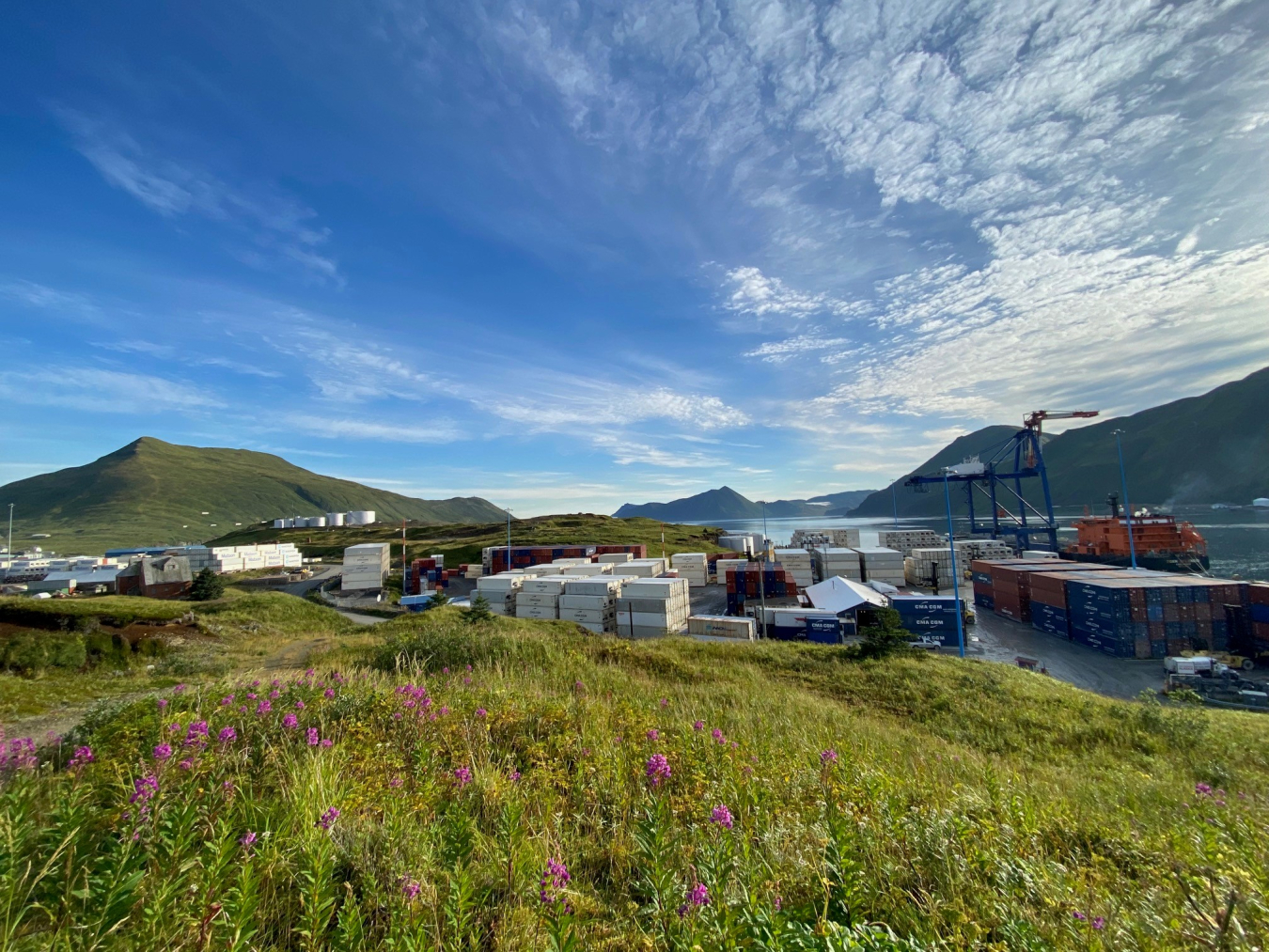Through the Arctic Energy Ambassadors Program, launched in January 2024, experienced practitioners across the state of Alaska are dedicating part of their time and expertise to improve energy security and capacity across the 49th State. In this article from Laresa Syverson, the Arctic Energy Ambassador serving the Aleutian region, hear about her experience growing up in Unalaska and how her work today helps bring about energy infrastructure upgrades for her community.
Growing up in Unalaska, on clear days we see the light steam rising from the top of Makushin Volcano. With the prevailing West wind, we also often get a whiff of sulfur. Tanam Kugan Nadanaxtaa, meaning “West Wind on the Land”, is a saying from Unangan (Aleut) elder Neon Merculieff. Similar to Iceland, the Unangam Tanangin (Aleutian Islands) where Unalaska is located, is in a very volcanically active part of the Ring of Fire. Over the years, I remember hearing the rumblings of City Council and outside entities researching to develop the geothermal resource in the region.
Now as an adult, I proudly work for the Ounalashka Corporation (OC) who owns the 7,000 acres at Makushin, which includes the original successful test well. The Ounalashka Corporation (OC) is just as active as the volcano itself for Geothermal development. I pursued the Arctic Energy Ambassador Program because OC is one of the larger landowners on Unalaska Island. We work with the City and Tribal Governments to prioritize infrastructure improvements for our community of about 5000 residents, and a Seafood and Shipping Industry that supplies the world. Unalaska often serves as a hub, a safe haven for vessels in distress, and a gathering place for Unangam Tanangin communities, well situated at the crossroads of international marine traffic. Together, we are taking action to bring renewable energy resources into our city’s grids, and our work includes hydro, wind, solar, and most recently geothermal.

Working with the Arctic Energy Ambassador program, I am grateful for the network of energy sector professionals that we are learning from, the opportunities for collaboration with State and National entities, and other like-minded people that live and work in all 12 of Alaska’s ANCSA regions. In the Unangam Tanangin, we have great geothermal resources, and awesome wind resources. But the cost to mobilize equipment to assess resources, navigating the marine habitat, weather, and terrain along the way, are expensive projects for an ANCSA Village Corporation. I am eager to see how our communities can work together.
Another common theme I am encountering, both personally and professionally, is contaminated lands from WWII that were returned to our Regional and Village Corporations. This is a burden to our health and grid development. Some sites have been “monitored” for decades, with little remediation progress made. Some are declared as an Act of War, therefore not eligible for cleanup funding programs. Others are in the National Historic Registry and subject to restrictions on how much we can clean up without destroying National Heritage.
Contaminated lands are impacting grid development as far as Adak island and include Amchitka island where nuclear weapons were tested. Some contaminates create chemical reactions with city infrastructure, leading to corrosion of pipes and conduits. Petroleum dumped during Acts of War migrates through the watershed and under buildings. When not running into petroleum or PCB’s, one might encounter dilapidated wood stave pipes or underground concrete utility corridors, when if removed may cause erosion issues. There is debris, concrete, and hazardous substances to navigate, and it is an extremely lengthy process to document and remediate. This only adds to the already high cost of mobilization and development.
Nevertheless, we remain optimistic! The OC Board of Directors recently signed a resolution to commit to an energy transition in hopes other entities and stakeholders can do the same, and together take the next steps outlined in our Regional Energy Plan. We love our region, our seafood, our international connections with the Arctic, and hope to see the industries here participate in the onboarding of renewable energy.
Learn More About the Ambassadors
The Arctic Energy Ambassadors program is led by the Arctic Energy Office, in partnership with the Denali Commission, Alaska Municipal League, and with additional funding from the Office of Energy Efficiency and Renewable Energy and the Office of State and Community Energy Programs.
Through deployment of energy projects and support for grant applications and technical assistance, the U.S. Department of Energy is delivering resources and partnership for the Arctic region, aligned with the DOE Arctic Strategy.